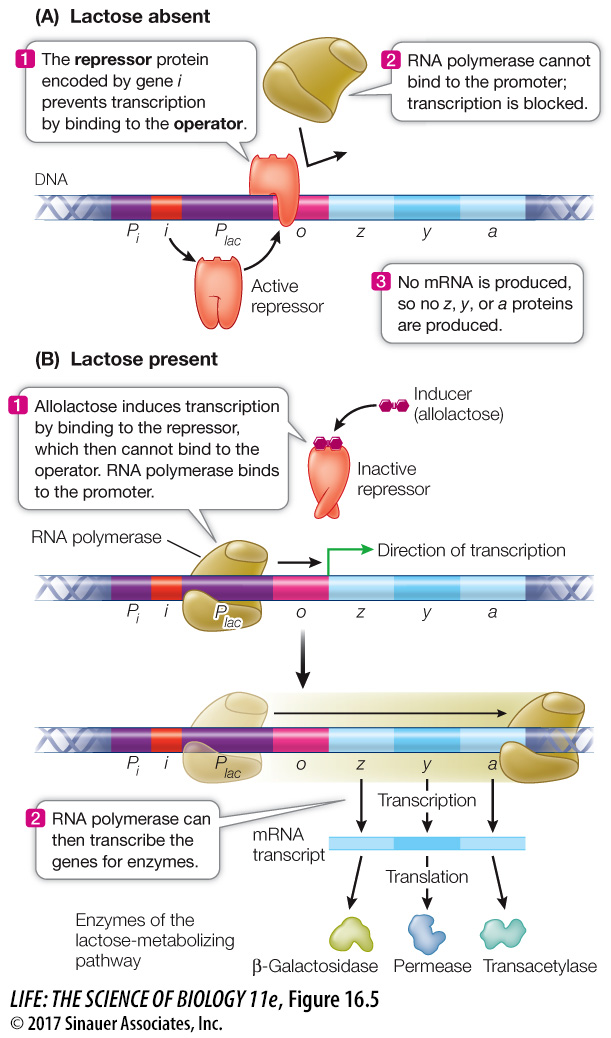Operator–
The lac operon contains a promoter, to which RNA polymerase binds to initiate transcription, and an operator, to which a repressor protein can bind. The gene that encodes this repressor is located near the lac operon on the E. coli chromosome. When the repressor is bound, transcription of the operon is blocked. This example of negative regulation was elegantly worked out by Nobel Prize winners François Jacob and Jacques Monod.
The repressor protein has two binding sites: one for the operator and the other for the inducer. The environmental signal that induces the lac operon (for example, in the human digestive tract) is lactose, but the actual inducer is allolactose, a molecule that forms from lactose once it enters the cell. In the absence of the inducer, the repressor protein fits into the major groove of the operator DNA and recognizes and binds to a specific nucleotide base sequence. This prevents the binding of RNA polymerase to the promoter, and the operon is not transcribed (Figure 16.5A). When the inducer is present, it binds to the repressor and changes the shape of the repressor. This change in three-

Animation 16.1 The lac Operon
www.Life11e.com/
You can see from this example that a key to transcriptional control of gene expression is the presence of regulatory sequences that do not code for proteins, but are binding sites for regulatory proteins and other proteins involved in transcription.
340
In contrast to the inducible system of the lac operon, other operons in E. coli are repressible; that is, they are repressed only under specific conditions. In such a system, the repressor is not normally bound to the operator. But if another molecule called a co-

When tryptophan is present in the cell in adequate concentrations, it is advantageous to stop making the enzymes for tryptophan synthesis. To do this, the cell uses a repressor that binds to an operator in the trp operon. But the repressor of the trp operon is not normally bound to the operator; it only binds when its shape is changed by binding to tryptophan, the co-
Let’s pause to summarize the differences between these two types of operons:
In inducible systems, the substrate of a metabolic pathway (the inducer) interacts with a regulatory protein (the repressor), rendering the repressor incapable of binding to the operator and thus allowing transcription.
In repressible systems, the product of a metabolic pathway (the co-
repressor) binds to a regulatory protein, which is then able to bind to the operator and block transcription.
Usually, inducible systems control *catabolic pathways (which are turned on only when the substrate is available), whereas repressible systems control anabolic pathways (which are turned on until the concentration of the product becomes excessive). In both systems, the regulatory protein is a repressor that functions by binding to the operator. Next we will consider an example of positive control involving an activator.
*connect the concepts As discussed in Key Concept 8.1, there are two kinds of metabolism: Catabolic pathways break down complex molecules into simpler ones, releasing energy formerly stored in the chemical bonds. Anabolic pathways link simple molecules to form more complex molecules, a process that requires an input of energy.
Animation 16.2 The trp Operon
www.Life11e.com/